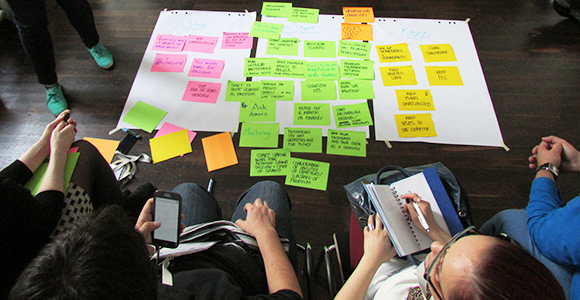
(Photo Credit: 3BRBS/Wikimedia)
At age 16, Amanda Gordon is already a California Community Colleges success story. In addition to attending Drake High School full time, taking business and entrepreneurship classes at Marin Community College and launching “California Gem”, a socially responsible jewelry business, she recently earned second place for Student Entrepreneurship Awards at the National Association for Community College Entrepreneurship Conference. In many ways, she’s the future of the California economy.
Here in California, 98 percent of companies are small businesses which provide 82 percent of the private sector jobs according to the Employment Development Department Labor Market Information Division. Those small businesses cross all sectors from handmade goods like those offered by Gordon to technology development and maintenance to services and apparel.
The California Community Colleges are responding by working with business, industry and other workforce organizations to address the skills gap in California. The Strong Workforce Program is designed to respond to the call of the nation, state and regions to close the skills gap in California's economy.
In the past, community colleges were often seen as a cost-effective way for students to complete their pre-requisites before transferring on to a four-year university. Today, community colleges are answering the call to provide more career and technical training to support the growth of California’s economy, especially in the small business and entrepreneurial space.
“Inspiring young people like Amanda remind us why the future of California is bright,” said Van Ton-Quinlivan, vice chancellor for workforce and economic development California Community Colleges. “The Strong Workforce Program understands that fostering entrepreneurs at a young age is an important facet in developing a workforce that will keep California a global power in the 21st century.”
The Strong Workforce Program has been a priority for the workforce goals of the California Economic Summit. Registration for the fifth annual meeting in Sacramento December 13-14 is open (Click here to get information and register). The Summit is continuing to emphasize workforce development as well as the need for more housing and water and what can be done to lift millions of California out of poverty and into the middle class. Getting young people, like Amanda Gordon, inspired to a career early in life is a most positive development in addressing California’s workforce challenge.
Gordon’s dual enrollment is a good example of one of the innovative ways community colleges are adapting. Goal-oriented and career-minded young people like Gordon have made dual enrollment in high school and community college a growing trend. Most of these programs require an application process that may include interviews and teacher recommendations to identify the students who can handle the academic rigor and the social stress inherent in the challenge.
According to Charles Eason, a Small Business Sector Navigator for Doing What MATTERS program of the California Community Colleges, part of the Strong Workforce Program mission is exposing students like Gordon to an entrepreneurial mindset so they think differently about problem solving not just at school, but in work and life, too.
Doing What Matters brings those soft skills to the classroom and also supports students in starting their own businesses. Their work is funded, in part, by SB1402 and SB1070. Together, these bills dedicate resources to workforce development, entrepreneurial training and growing career pathways for California’s students.
“Our focus is to infuse small business and entrepreneurship concepts into all of the various career and technical education disciplines so that students will have both the needed technical skills and the needed business skills to succeed in the workforce and to become future entrepreneurial leaders,” Eason explained.
For Eason, striving to have a balance of workforce development and business development just makes sense. Moving beyond the soft skills to providing innovation centers throughout the community college system that inspire and encourage entrepreneurship with tools like laser cutters, 3D printers and automated sewing machines may lead to new products and businesses. But they’ll also maintain an emphasis on the soft skills, too. Doing What Matters will continue to transform the minds of community college students, hopefully with a grant from the Economic Development Administration that will provide innovation and entrepreneurship training in collaboration with the projects such as the community college based makerspaces and business incubator programs.

